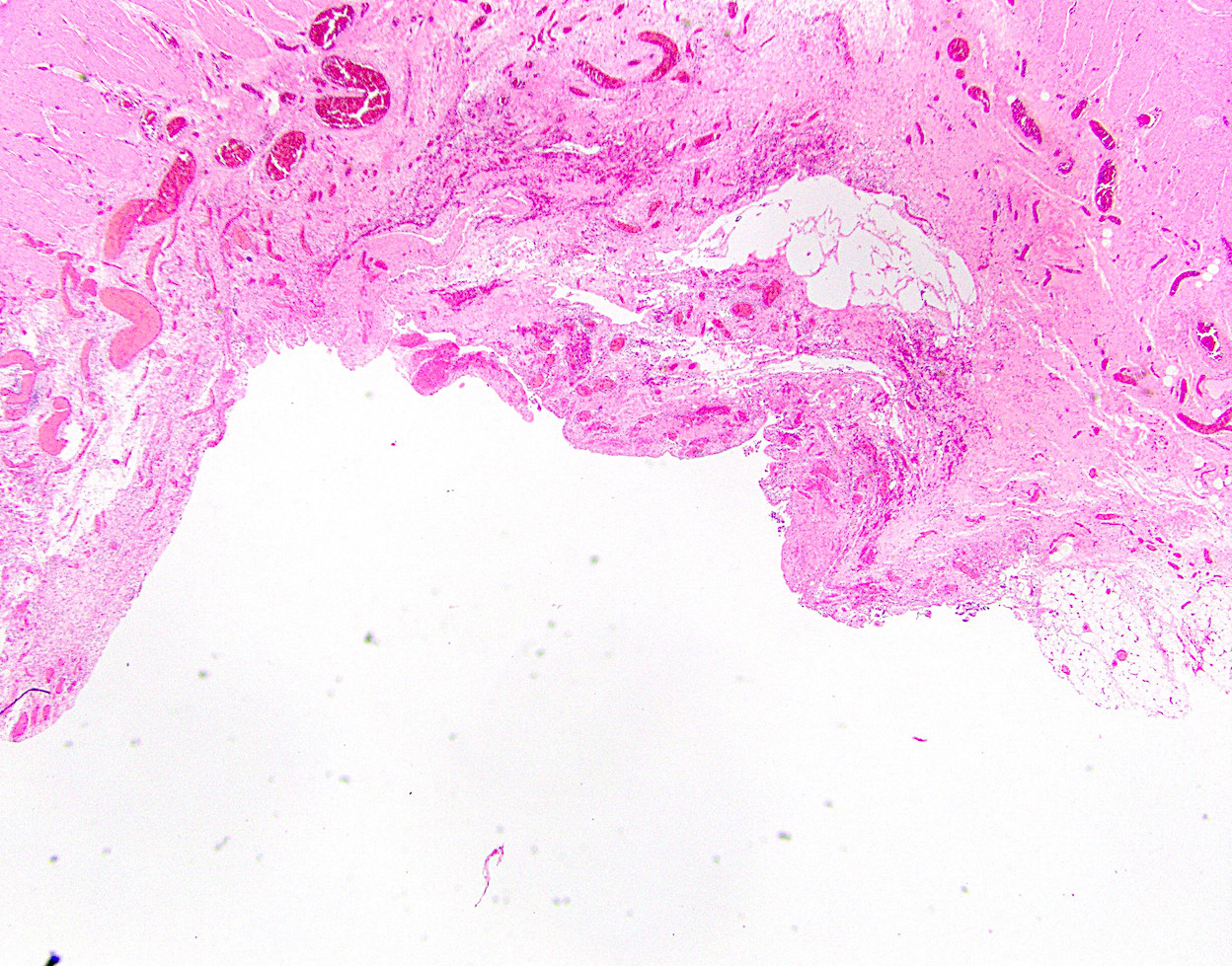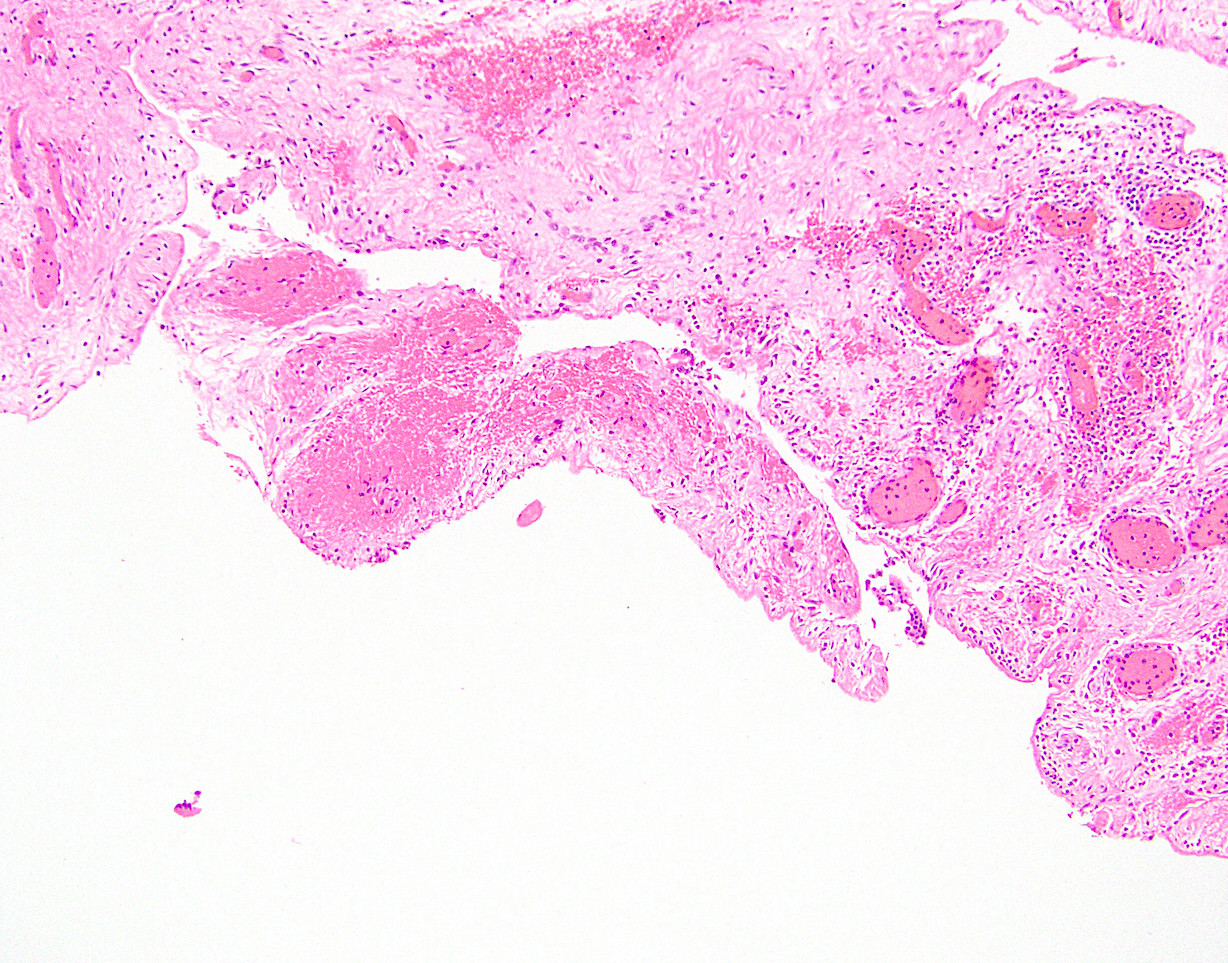Table of Contents
Definition / general | Essential features | Sites | Etiology | Clinical features | Diagnosis | Treatment | Clinical images | Microscopic (histologic) description | Microscopic (histologic) images | Sample pathology report | Board review style question #1 | Board review style answer #1Cite this page: Gonzalez RS. Adhesions. PathologyOutlines.com website. https://www.pathologyoutlines.com/topic/colonadhesions.html. Accessed May 1st, 2024.
Definition / general
- Serosa based fibrous bands of scar tissue that cause colon to connect and adhere to nearby structures, typically other viscera
Essential features
- Fibrovascular scar tissue of the colonic serosa, usually secondary to injury or prior surgery
- Can distort anatomy and lead to complications such as obstruction, herniation or ischemia
Sites
- Can occur anywhere in GI tract, commonly between bowel segments or abdominal wall and operative site
Etiology
- Typically due to injury, such as prior surgical procedures, infection (i.e. peritonitis) or radiation damage
- Also Crohn's disease or serosal endometriosis
- Rarely congenital
Clinical features
- Common cause of abdominal obstruction (Colorectal Dis 2007;9:39)
- Cause hospital admissions in up to 33% within 10 years of colorectal surgery (Dis Colon Rectum 2001;44:822)
- Can complicate hospital stay after colorectal surgery (Am J Surg 2013;206:166)
- May create internal herniations (closed loops through which viscera slide)
- May result in segmental intestinal ischemia, often due to arterial occlusion
- Can necessitate conversion from laparoscopic to open surgery (Surg Technol Int 2011;21:147)
- Rarely cause colonic obstruction (Am Surg 1984;50:479)
Diagnosis
- Typically observed radiologically or during surgery; can also be seen microscopically
Treatment
- When severely symptomatic, consider partial or total colectomy (Int J Colorectal Dis 2013;28:1407)
Microscopic (histologic) description
- Cellular fibrous connective tissue containing vessels and nerves; may contain fat and smooth muscle clusters (J Pathol 2000;192:67)
Microscopic (histologic) images
Sample pathology report
- Ascending colon, resection:
- Segment of colon with reactive change and prominent serosal adhesions
- Margins of resection unremarkable.
- Four benign lymph nodes.
Board review style question #1
Board review style answer #1








